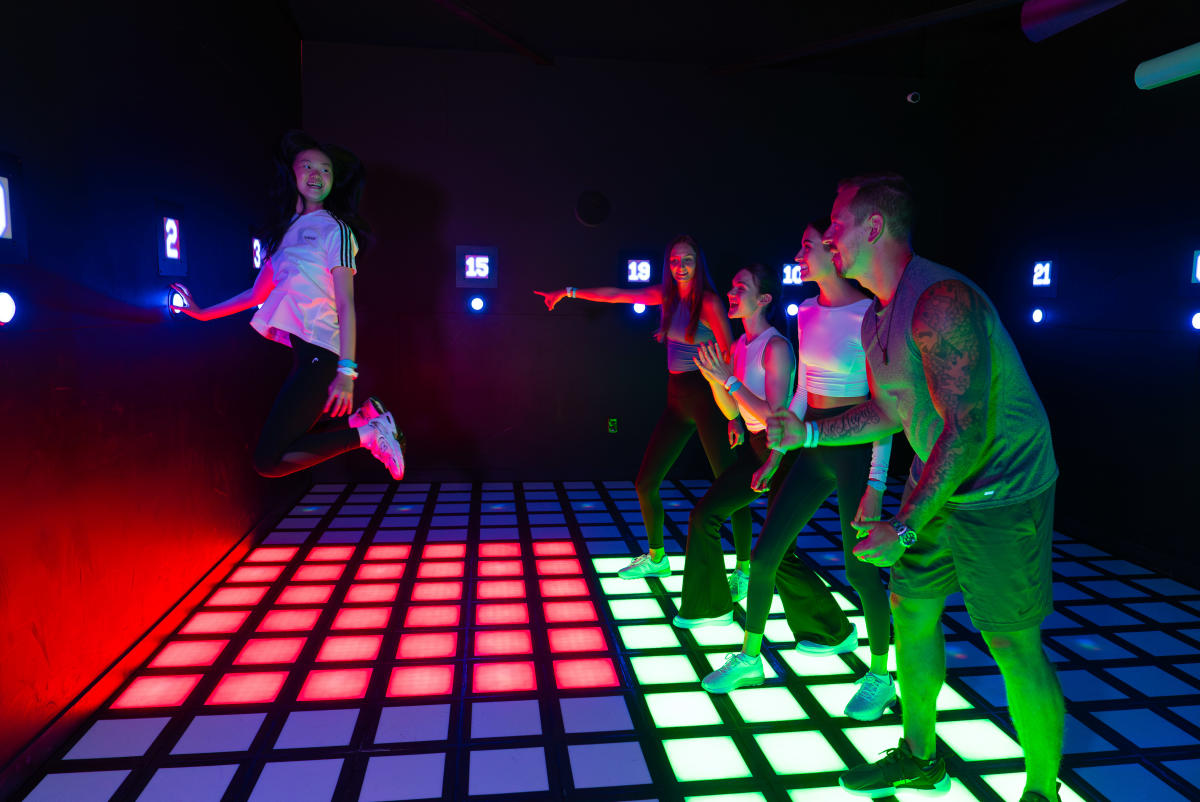Discover the revenue potential of Activate Games versus traditional indoor playgrounds. Learn how interactive entertainment drives higher ROI, customer retention, and per-square-foot earnings in this data-backed comparison.
In the competitive landscape of indoor entertainment, businesses are constantly seeking innovative ways to maximize profitability and space efficiency. Two popular options dominate the market: Activate Games (digital-physical hybrid experiences) and Traditional Indoor Playgrounds (static play structures). But which one truly delivers higher returns per square foot?
This article breaks down the key differences, backed by industry data and case studies, to help investors, venue owners, and entertainment providers make informed decisions.
1. Revenue Potential: Activate Games Dominate Per-Square-Foot Earnings
Activate Games leverage cutting-edge technology (AR/VR, motion sensors, interactive projections) to create immersive, high-engagement experiences. Here’s why they outperform traditional playgrounds financially:
- •Higher Ticket Prices: Interactive games attract premium pricing. For example, Activate Games’ LAVA FLOORor Active Reaction Game Roomcharge 15–25 per person for 30-minute sessions, while traditional playgrounds typically charge 5–10 per child.
- •Faster Customer Turnover: Shorter play sessions (15–30 minutes) increase throughput. A single 200 sq ft Activate Game room can accommodate 4–6 players per hour, generating 60–150/hour. In contrast, a 200 sq ft traditional playground might serve 10–15 children/hour at 5–10 each (50–150/hour), but with limited upsell potential.
- •Repeat Business: Activate Games’ gamified challenges and leaderboards encourage return visits. Venues with these experiences report a 30–50% higher monthly revisit rate compared to static playgrounds.
Real-World Example:
Activate Games’ client in Sanya, China, saw a 300% ROI within 6 months of launching 9 Activate Game rooms. Their per-square-foot revenue surpassed traditional playgrounds by 30–50/month, thanks to tiered pricing (casual vs. VIP memberships) and corporate event bookings.
2. Operational Costs: Lower Overhead for Activate Games
While initial investments in technology may seem steep, Activate Games offer lower long-term costs:
- •Maintenance: Traditional playgrounds require frequent repairs (broken slides, moldy climbing structures) and sanitation (especially post-COVID). Activate Games’ digital components have minimal upkeep, with software updates handled remotely.
- •Staffing: Interactive games automate scoring and monitoring, reducing the need for attendants. A single staff member can manage 3–4 Activate Game rooms, whereas traditional playgrounds often require 1:1 supervision.
- •Scalability: Activate Games can be easily expanded or reconfigured. Activate Games’ modular designs allow clients to swap out games (e.g., replacing a laser maze with an escape room) without major renovations.
3. Customer Experience: Drive Longer Engagement & Spend
Activate Games offer immersive themes (sci-fi, horror, fitness) that captivate players for longer durations. This translates to:
- •Increased Concessions Sales: Themed environments (e.g., Dodgeball Strike’s retro arena or Fitness Climb’s mountain-themed wall) encourage visitors to buy snacks, merchandise, or photo packages.
- •Corporate & Event Hosting: Businesses prefer Activate Games for team-building events, birthday parties, and social gatherings. Activate Games clients report a 40% uplift in ancillary revenue from rentals and sponsorships.
Key Stat:
A study by PlayCorefound that interactive entertainment venues achieve a 65% higher average spend per visitor compared to traditional playgrounds.
4. Competitive Landscape: Why Traditional Playgrounds Struggle
Traditional indoor playgrounds face declining appeal due to:
- •Homogeneity: Generic ball pits and slides offer little differentiation.
- •Seasonality: Indoor/outdoor transitions affect attendance.
- •Safety Concerns: Crowded play areas pose hygiene risks.
Activate Games sidestep these issues with:
- •Evergreen Appeal: New game modules (e.g., Pandora Sports’s augmented reality challenges) keep content fresh.
- •Hygiene-Friendly Design: Contactless interactions reduce germ transmission.
- •Year-Round Demand: Corporate events and fitness-focused games (e.g., Activate Fitness Climb) thrive regardless of weather.
5. Case Study: Success Story from Riyadh, Saudi Arabia
Activate Games’ activation game rooms in Riyadh generated $250/sq ft/month within 3 months of launch. Key factors:
- •Localized Themes: Games incorporated regional folklore and Arabic calligraphy.
- •Partnerships: Collaborations with gyms and coworking spaces boosted foot traffic.
- •Low Entry Barrier: Flexible pricing models (pay-per-play, memberships) attracted diverse demographics.
Activate Games Offer Unmatched ROI
When comparing per-square-foot earnings, Activate Games leave traditional playgrounds in the dust. With higher revenue potential, lower operational costs, and adaptable technology, they cater to modern consumers’ demand for immersive, shareable experiences.
Ready to Boost Your Venue’s Revenue?
